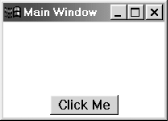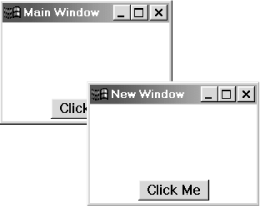How the Superclassing Example Works
To illustrate how you use superclassing, I will step through creating a relatively simple application which superclasses two existing window classes. I wrote the code completely in VB. However, I wrote it using Windows API functions. Visual C++ developers might recognize this code to be similar to the standard “hello world” application written in Visual C++.
The example will first superclass the
ThunderRt6FormDC class that is used to create VB
forms. The new class will be identified
by the name
NewMainWindowClass. It will have its own window
procedure and will use the IDC_UPARROW mouse
pointer as its default pointer.
Normally, window classes use the IDC_ARROW for
their mouse pointer. The IDC_UPARROW mouse pointer
is simply an arrow pointer similar to the default mouse pointer,
except that it points straight up instead of upward and to the left.
The caption for the first window created from the NewMainWindowClass superclass will be “Main Window”, as Figure 7-4 shows. All subsequent windows created from this class will have the caption “New Window”, as Figure 7-5 shows.

Figure 7-4. The main window

Figure 7-5. The new window
In addition to superclassing ThunderRT6FormDC,
we’ll also superclass the system-wide BUTTON
window class. This
is the class that ...
Get Subclassing and Hooking with Visual Basic now with the O’Reilly learning platform.
O’Reilly members experience books, live events, courses curated by job role, and more from O’Reilly and nearly 200 top publishers.

